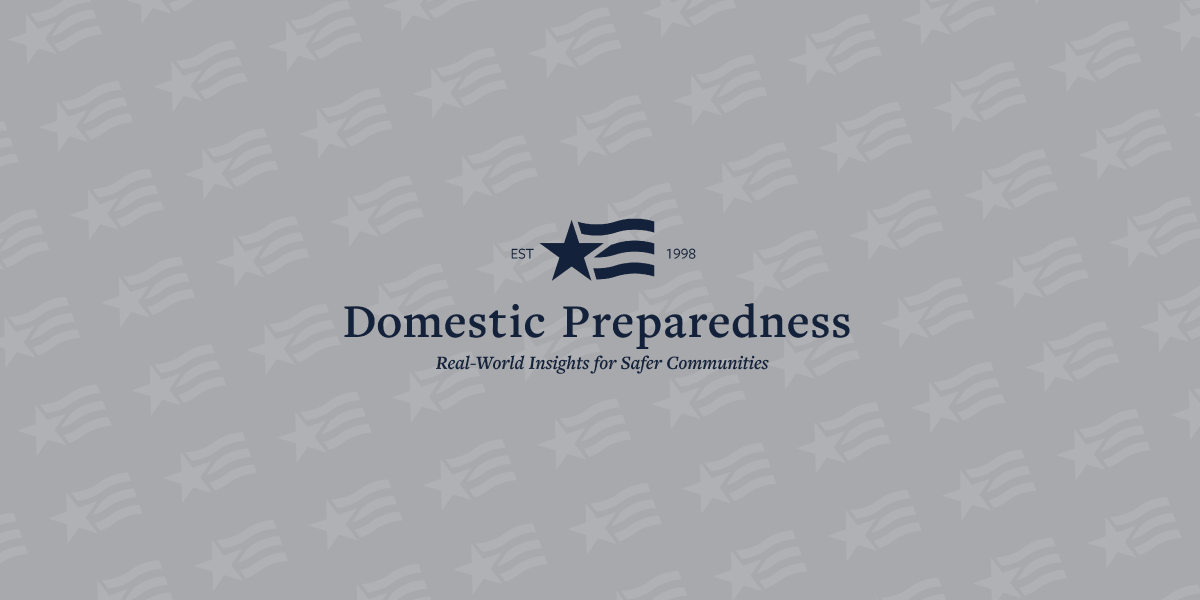VIRGINIA BEACH, Va. – The Virginia National Guard conducted a four-day hurricane preparedness exercise June 15 to 18 at the State Military Reservation in Virginia Beach with the goal of improving the Virginia Guard’s ability to plan and carry out domestic operations in conjunction with state agencies and local first responders. This particular exercise simulated a major hurricane hitting the Hampton Roads area.
“The world has changed since 9-11 and Hurricane Katrina, and our citizens expect the National Guard to be ready to respond in a time of crisis,” said Maj. Gen. Robert B. Newman, Jr., the Adjutant General of Virginia. “The only way we can be properly prepared to respond in a time of need is to plan, train and exercise our procedures in coordination with our state partner agencies. This exercise is an important part of that preparation.”
Approximately 500 Soldiers, Airmen and members of the Virginia Defense Force took part in the exercise with the focus being on the Virginia Guard’s Joint Staff and the staff of the Richmond-based 91st Troop Command. In an incident response situation, 91st Troop Command becomes Joint Task Force 91 and provides command and control for Virginia Guard units taking part in the mission. The Fort Pickett-based 183rd Regional Training Institute also took part in the exercise and worked on expanding the Joint Reception, Staging, Onward Movement and Integration plan to bring in units from other states during an emergency.
“The Joint Staff and JTF-91 are the primary training audiences, but I want this exercise to include the participation, notional or live, of all necessary elements of the Joint Staff in a way that replicates emergency conditions as accurately as possible,” Newman said at the start of the exercise. “The focus of the staff will be on operations and the integration of different staff elements as well as the Virginia Defense Force. We hope toentify equipment, personnel and operational shortfalls related to interaction with joint and interagency organizations so we are better prepared to respond to the real thing.”
The first two days of the exercise simulated the lead up to the landfall of the hurricane, and the final two days simulated recovery operations after the storm ended. An after action review to capture the key lessons learned will be conducted on Friday.
“Even though this training scenario is based on a hurricane response, the lessons we learn here would apply to any kind of mission we might receive,” said Col. Rob McMillin, joint operations officer for the Virginia Guard.
The exercise tested the procedures the Guard uses to respond to requests for assistance that are funneled through the Virginia Department of Emergency Management into the Virginia Guard’s Joint Operations Center. Representatives from VDEM as well as the Virginia State Police were involved with the exercise and other key agencies like the Virginia Department of Transportation are being simulated by the exercise control agency.
VDEM and State Police personnel also conducted tests of communications interoperability between their communications equipment and the Virginia Guard’s communications equipment.
McMillin said that in a hurricane response situation the Guard would be prepared to execute a number of preplanned missions such as assisting the Virginia State Police if the Governor of Virginia authorized lane reversal for Interstate 64 to evacuate citizens from the Hampton Roads area and assist in the operation of the shelters for those citizens once they were evacuated. The Guard has also planned to conduct security operations to help the State Police secure areas damaged by the storm, and Virginia Guard personnel could also assist with debris removal and road clearance.
At the end of the first day of the exercise, the Guard has been able toentify ways to improve their operation. “We learned that our processes weren’t perfect, but our people are very adept atentifying where we can get better,” McMillin said.
For JTF-91, this was the first time the organization was able to work together as a combined staff. As 91st Troop Command, the headquarters provides command and control for a number of different units throughout Virginia, but providing command and control for a large-scale incident response is a new mission.
“The exercise has gone very well for us,” said Col. Steve Scott, commander of JTF-91. “Since we have never worked together in this type of organization, there were a number of things for us to learn. While we still have areas we need to work on, after this exercise I am confident we could execute this mission if we needed to.”
Some of the key lessons learned during the exercise were in the organization and procedures of the operations center as well as information flow and general command and control procedures, Scott said.
Not all of the staff positions needed to for the JTF-91 position exist in the 91st Troop Command organization, so the unit integrated members of the Virginia Defense Force into staff positions like chaplain, communications officer, medical officer and incident awareness officer.
“The Virginia Defense Force has been invaluable,” Scott said. “They bring a wealth of experience with them, along with great enthusiasm and energy for the mission.”
Scott said that in the coming months, 91st Troop Command will balance their training with tasks for the JTF mission with tasks for their other state missions.
In a large-scale incident response, National Guard units from other states could be brought in to assist with recovery operations or other missions. When that happens, the units need to be brought into Virginia and integrated into the mission. The 183rd RTI started the exercise with an operations plan for the JRSOI mission, and they were able to revise that plan based on lessons learned as the exercise progress, said Lt. Col. Colt Puryear, operations officer for the 183rd RTI.
“When a unit arrives in Virginia, we need to immediately provide assistance to fix, feed and fuel them in order to get them into the mission as quickly as possible,” Puryear said. In order to do that, the staff of the 183rd developed a plan to establish reception points at truck stops along major road intersections along probably routes of entry into Virginia. A team of four Soldiers would be assigned to greet the unit, assess any immediate needs they have, then escort them to Fort Pickett to be stage for future operations. In some cases, they could head straight into the incident site, he said.
As part of the exercise, the 183rd simulated receiving more than 850 Soldiers into Virginia to assist with hurricane recovery operations.
During the course of the exercise, the different staff organizations received more than 250 scenario “injects” that required some sort of response or staff action. Some injects were weather reports, others simulated requests for assistance with evacuation, sheltering, security and general support. Almost half of the injects were scenarios that would simulate the many challenges that could come up during state active duty like Soldiers getting sick or injured or equipment breaking down.
According to Al Leonard, commander’s operations & training assistant from General Dynamics Information Technology, planning for the exercise began in October 2008. After receiving guidance from the Adjutant General as to the key training objectives for the exercise, Leonard team’s designed the scenarios to support the objectives based on real situations from past incidents in Virginia and other states.

Virginia Guard Public Affairs
Virginia Guard Public Affairs
- This author does not have any more posts.

Cotton Puryear
Maj. Cotton Puryear
- This author does not have any more posts.






